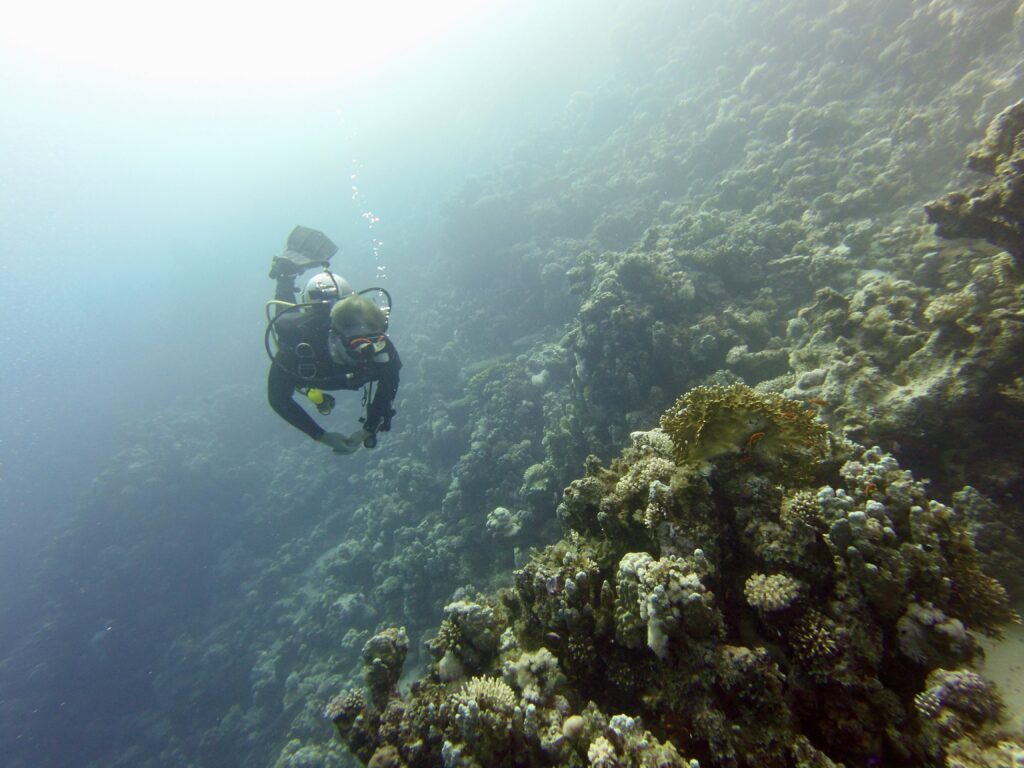
Oceanic Alpha 10 Review by Diving Squad
Diving Squad Rating:
“One of the reasons I love the Oceanic Alpha 10 as an alternate second stage is because it’s super affordable!
Remember that your alternate second stage rarely see’s any action – it’s just a spare in case something happens to your primary second stage or you need to lend a buddy air.
So there’s no need to fork out freakin’ loads of money for it because you’ll rarely use it! If you want a fancy second stage, better to make that your primary second stage regulator – the one you’ve got in your gob all the time.
When looking for a suitable alternate second stage, you will want something that gets the job done well in whatever situation you require it for – but it doesn’t need to be a top of the range model.
Budget-friendly though it may be the Oceanic 10 still offers great durability, comfort and extremely decent quality. In fact, it even has an airflow restrictor which is rarely seen on cheaper scuba regulators!
In this review of awesomeness I’m going to talk about the Oceanic Alpha 10 scuba regulator – it’s features, pros and cons and some of the places I’ve dived with it. Let’s do this”!


^ My trusty Oceanic Alpha 10 is stowed away in the yellow octopus holder clipped to my BCD as I behold the mighty coral reefs of Egypt.
Alex: Grand Admiral of the Diving Squad
PROS
- Cheap
- Durable
- Comfortable mouthpiece
- Easy breathing
- Airflow adjustment – rarely seen in cheap regulators!
CONS
- Mouthpiece only made of one material (much more expensive regulators feature dual-material mouthpieces).
- Airflow control dial is basic and a bit stiff (but virtually no other cheap scuba regulators have any airflow control at all).
KEY SPECS:
- Pneumatically balanced mechanism
- Dive/ Pre-Dive Switch
- Airflow Control Dial (Basic)
- Orthodontic Mouth Piece (1 material)
- Nitrox compatible to 40%
- Purge Button
- Budget-Friendly Scuba Regulator
- Compatible with Oceanic eDX First Stage
- Can be used in waters as cold as 4 degrees celsius.

MY REVIEW OF THE OCEANIC ALPHA 10:
Although it’s my backup, I’ve still used my Oceanic Alpha 10 for the entirety of some dives, to see how it performs and check it’s still operating properly.
Every time I use it, I’m always surprised at the comfort provided by its orthodontic mouthpiece.
Despite only being constructed from only one material (unlike say the Oceanic Delta 5 mouthpiece which is dual-material), the Oceanic Alpha 10 mouthpiece still feels soft and doesn’t cause any aches or discomfort in my jaw. So far, so good!
It features a pneumatically balanced mechanism which for many years was only seen on luxury-end scuba regulators but which is becoming increasingly more common in cheaper regulators.
A pneumatically balanced mechanism makes the first part of the inhalation cycle easier – I’ve found it certainly does feel pretty effortless breathing through the Oceanic Alpha 10.
RE breathing what’s also really nice is the fact that it features an airflow control dial (aka Venturi switch) which you can turn to increase or decrease airflow.
This is really useful for ensuring airflow remains constant as if you can’t adjust it, it will change as you dive down deeper. It’s worth mentioning that this airflow dial is pretty basic – you can only turn it about 90 degrees and it’s a little stiff to operate.
Airflow dials seen on more expensive second stage regulators – such as the Oceanic Delta 5 can turn three hundred and sixty degrees and require less effort to turn – i.e. they’re not stiff.
BUT in the Oceanic Alpha 10’s defence, it still does have an airflow restrictor – which other scuba regulators at its price range do not!
So basic though it may be, but I’m going to count it airflow restrictor dial as a big tick in the favour of the Alpha 10. Huzzah!
Simple though it may look but this is a tough and durable regulator and it can also operate in temperatures as low as 4 degrees celcius making it suitable for cold water diving.
Alrighty! We’ve covered the various features of the Alpha 10 – time to wrap things up!!



FINAL VERDICT:
Ahoy! Ohohoho You’ve made it all the way to the end of this review so you must be feeling pretty interested in the Oceanic Alpha 10. Hopefully this review has sated your curiosity!
Honestly – if you’re looking for a budget-friendly backup regulator (second stage) then this little dude is a great choice.
It’s highly affordable yet very reliable, with a comfortable mouthpiece, durable outer-body and some surprising yet stats like it’s cold water usability, pneumatically balance diaphragm for easier breathing and featuring an airflow dial which is so very rarely seen in other regulators that are it’s.
That’s why I love using it as a backup regulator to my Delta 5.
The Oceanic Alpha 10 is a great piece of kit and one that continues to accompany me on all of my scuba odysseys.
